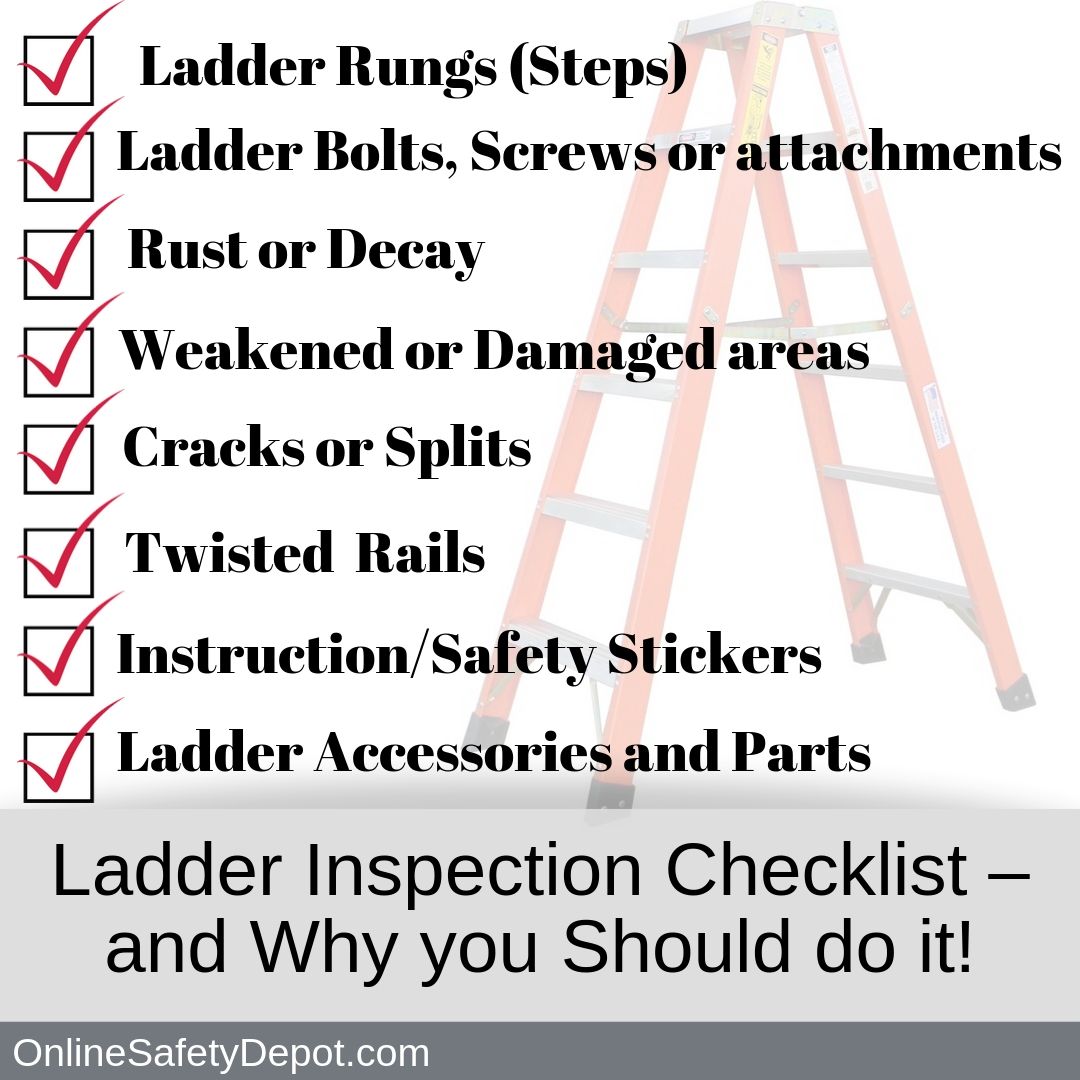Ladder Inspection Checklist – and Why you Should do it!
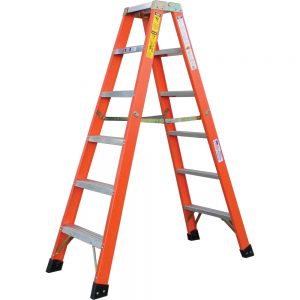 In a previous article titled, “Why Do People Fall from Ladders and How to Prevent It”, I mentioned an experience I had a few years ago where I fell off a ladder because the ladder was damaged. Had I inspected the ladder before I used it, I would never have used the ladder in the first place. Inspecting a ladder only takes a minute or so and could possibly save you from injury or even death.
In a previous article titled, “Why Do People Fall from Ladders and How to Prevent It”, I mentioned an experience I had a few years ago where I fell off a ladder because the ladder was damaged. Had I inspected the ladder before I used it, I would never have used the ladder in the first place. Inspecting a ladder only takes a minute or so and could possibly save you from injury or even death.
Each of the following items should be checked on a ladder before using it:
- Ladder rungs (steps)
- Ladder bolts, screws or attachment parts
- General Rust or decay
- Weakened or damaged areas
- Cracks or splits
- Twisted or distorted rails
- Instruction/Safety stickers.
- Ladder accessories and attachment parts
To better understand the importance of each of these items, let’s take a look at them each individually.
Ladder Rungs (steps)
The first thing to look for are any bent, missing, or otherwise broken rungs. Using a ladder that has a missing or damaged rung is extremely dangerous. If the ladder has a missing or damaged rung it should be thrown away.
Warn out ladder rungs is another common problem that can occur with well-used ladders. Metal ladders have rungs with grooves or ridges on each rung to help with gripping. Over time, the grooves get worn down and don’t provide the traction/grip as it should to ensure your safety. If this is the case, it’s time to get a new ladder!
Ladder Bolts, Screws or Attachment Parts
Ladders are made up of several different parts and components connected together by bolts and screws. Before using a ladder of any kind, look it over for any loose/missing bolts or screws. Try opening and closing the ladder (step ladder) or extending/retracting the ladder (extension ladders) to see if the ladder operates as it should. Stand the ladder up and shake the ladder with your hand. This will help you identify any loose or missing bolts and/or screws.
If the ladder is missing a screw or bolt, take it to a professional repair shop or consider getting a new ladder. Ladders are put together using specific bolts or screws that are designed specifically for the ladder. The wrong kind or size of bolt will not allow the ladder to operate correctly and may not support you when you are using the ladder.
Some ladders are equipped with accessories or have the capability to add accessories to the ladder. If the ladder accessory is damaged or missing a bolt, discard it.
Rust or Decay
While it depends on the amount of rust or decay, a rusty metal ladder or a wooden ladder with decaying wood is a sign of a damaged ladder that should not be used. When reviewing any ladder that has rust or decay occurring on the ladder, especially on the rungs or key parts of the ladder I suggest erroring on the safe side and getting a new ladder.
Weakened or Damaged Areas
Ladders that have been left outside in the rain, snow or blistering sun may develop weakened areas in the ladder. This may be hard to notice and inspect.
For metal ladders, use the palm of your hands to push on the metal while feeling for areas that are not solid or that “pop” in and out with pressure. For wooden ladders, feel for soft areas (with the palm of your hands) that when pushed in, create an indent or impression. This is a sign of water damage and compromises the integrity and strength of the ladder.
Cracks or Splits
Cracks or splits on any type of ladder, regardless of the size, should be discarded and not used. It may be tempting to use a ladder that has a small crack on it. However, your weight will only make the crack bigger and less safe.
Twisted or Distorted Rails
Extension ladders, if not taken care of, can bend and twist along the sliding rails. It is important to inspect the rails as most of the ladder’s support is depended on the rails. You may not always notice if the rails are bent or damaged unless you are specifically looking for it.
For badly damaged rails, discard the ladder immediately. Otherwise, you will want to keep an eye on all slight and minor damages to the rail to ensure that they do not become worse with use.
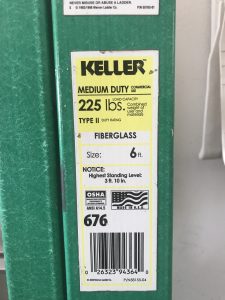 Instruction/Safety Stickers.
Instruction/Safety Stickers.
All ladders are sold with safety stickers on the sides. They include the following information:
– If the ladder is OSHA approved or not
– Ladder height
– Set up/take down instructions
– Load capacity
– Where the ladder is made (USA. China, etc)
– The ladder’s highest standing level for safety
– What the ladder is made of
– Whether the ladder is made for commercial or residential use
– Ladder checklist (for that particular ladder)
– How to care and store the ladder
– Proper use of the ladder.
Ladder Accessories and Attachments Parts
Depending on the ladder, it can be equipped with some additional accessories for various projects. If you are using an attachment or accessory with you ladder you need to do two main things:
- Ensure that the accessory is designed to be used with the ladder you are using.
- Inspect the accessory to ensure that it has not be damaged and is still in good working order.
For Example:
Werner ladders are great for both the professional and the DIY homeowner. One accessory that they make is the AC78 Quickclick Stabilizer. It is designed to allow ladders to be placed in front of a window by attaching bars that rest on the side of the window. This allows the user to wash the window or paint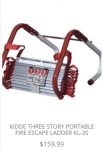 the window trim without adding pressure to the glass window.
the window trim without adding pressure to the glass window.
There are several other ladder accessories on the market. For your own safety, it is important to inspect them before using them.
Common Questions
When Should you Inspect a ladder or ladder accessory?
Ladders should be inspected:
- At the beginning and end of a season
- Before you purchase a ladder
- When given a ladder
- Before each use
- If the ladder has been tipped over, fallen or dropped
How can you make your Ladder last longer?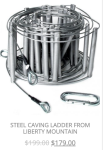
- Properly store your ladder
- Apply a protective coat on wooden ladders (sealer, wax or other wood preservative)
- Clean fiberglass ladders with clear lacquer or paste wax every 3 months
- Oil or lubricate any pulleys on extension ladders
- Handle the ladder with care when opening/closing step ladders
Can I fix the ladder myself?
NO! Never attempt to repair a broken or bent ladders. Ladders that are missing bolts or other connective items should be repaired by a licensed professional.

